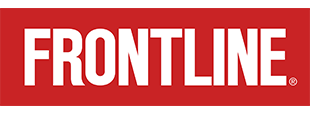America’s Medical
Supply Crisis
The coronavirus has exposed deadly weaknesses in global medical supply chains. For the past seven months, our team has been interviewing manufacturers and government officials, analyzing records, and tracing key medical supplies. Produced by the PBS series FRONTLINE, The Associated Press, and the Global Reporting Centre, America’s Medical Supply Crisis is a joint investigation examining the failures and unheeded warnings of a system at risk.
Additional teaching material is available from pulitzercenter.org/USMedicalSupplyCrisis.
Watch nowOnly available in the U.S. and Canada.


America's Medical Supply Crisis has been recognized with the Investigative Reporters and Editors Award, the top investigative journalism prize in North America, and the Deadline Club Award for Business Investigative Reporting. Read more.
N95 respirator masks
At the start of the pandemic the U.S. had 12 million usable N95 masks in the Strategic National Stockpile — less than 1% of what the Department of Health and Human Services estimated we’d need. Months later, the U.S. is still short.
What went wrong?Testing
The lack of early testing was a major stumble. First, the Centers for Disease Control and Prevention’s tests were faulty. Then there weren’t enough. And even when tests were available, without access to cheap, disposable swabs — which are still in short supply — they were useless.
What was the response?Ventilators
U.S. medical experts estimated the country would need between 60,000 and 160,000 ventilators to handle COVID-19. But in the early days the U.S. had an estimated 13,000 — around 2,000 of which were inoperable due to lapsed maintenance.
When did more get made?Syringes
The U.S. will likely need some 850 million syringes to vaccinate everyone in the country, on top of the hundreds of millions needed each year for everything from diabetic insulin to dental anesthesia.
Will there be enough?

